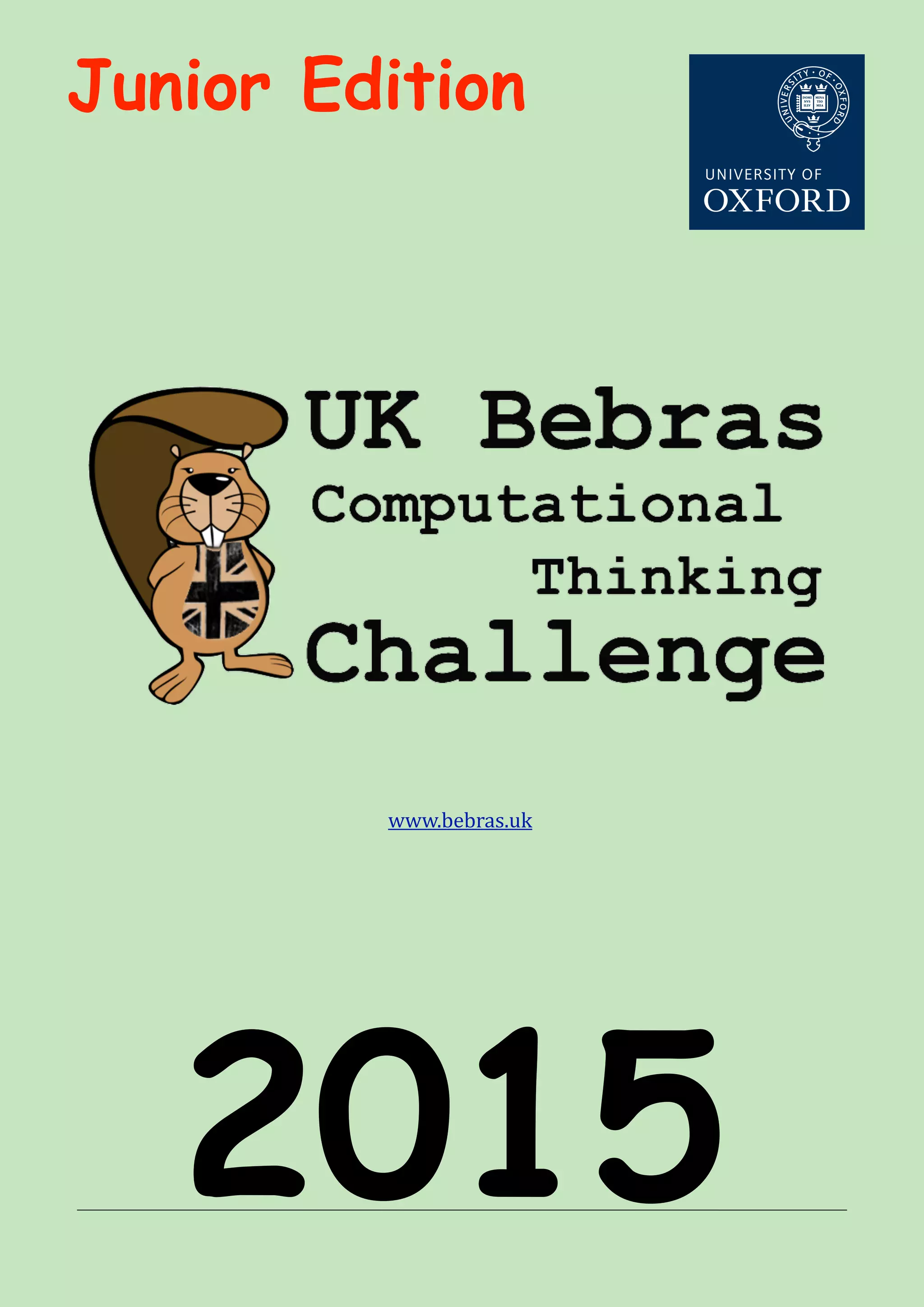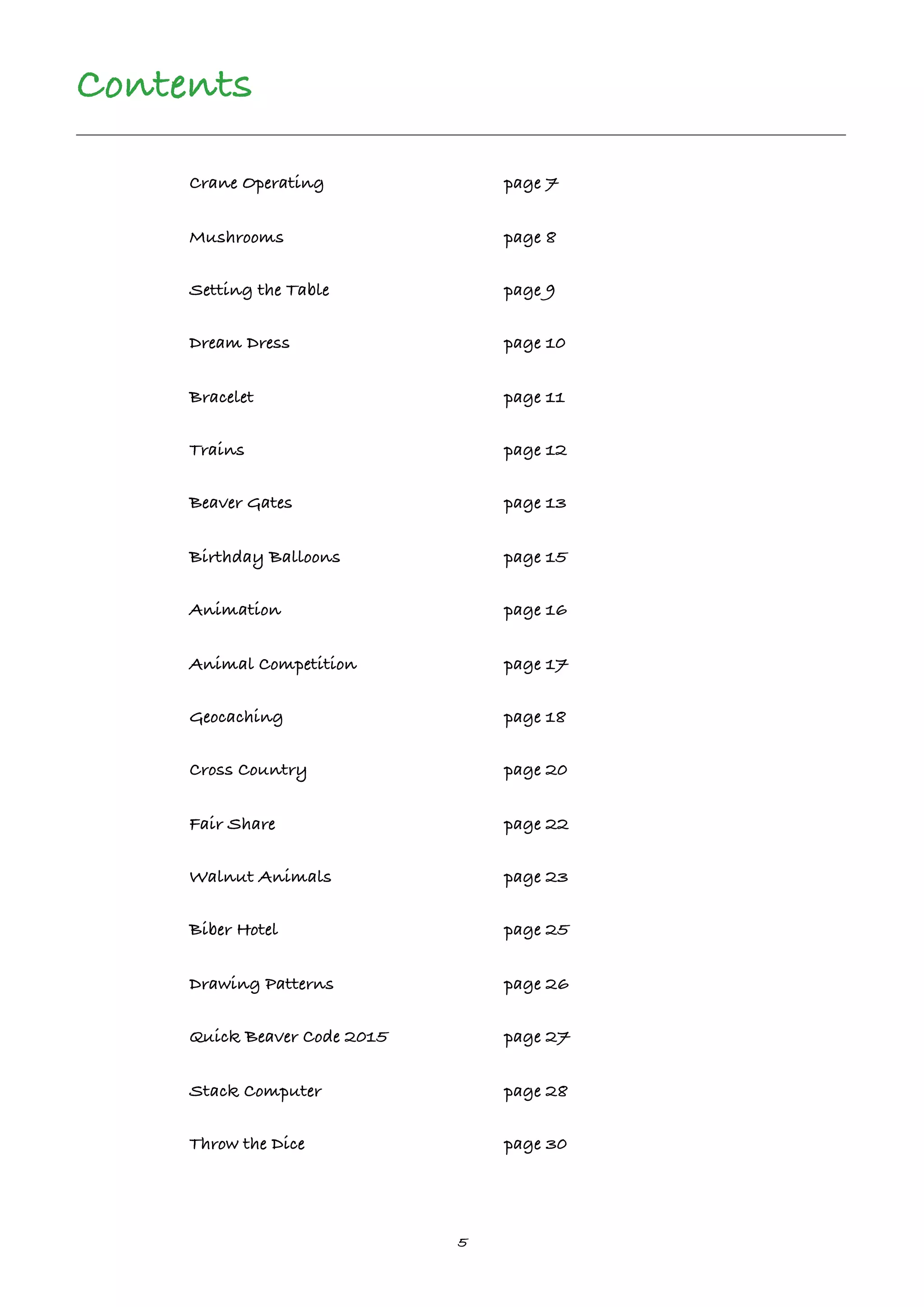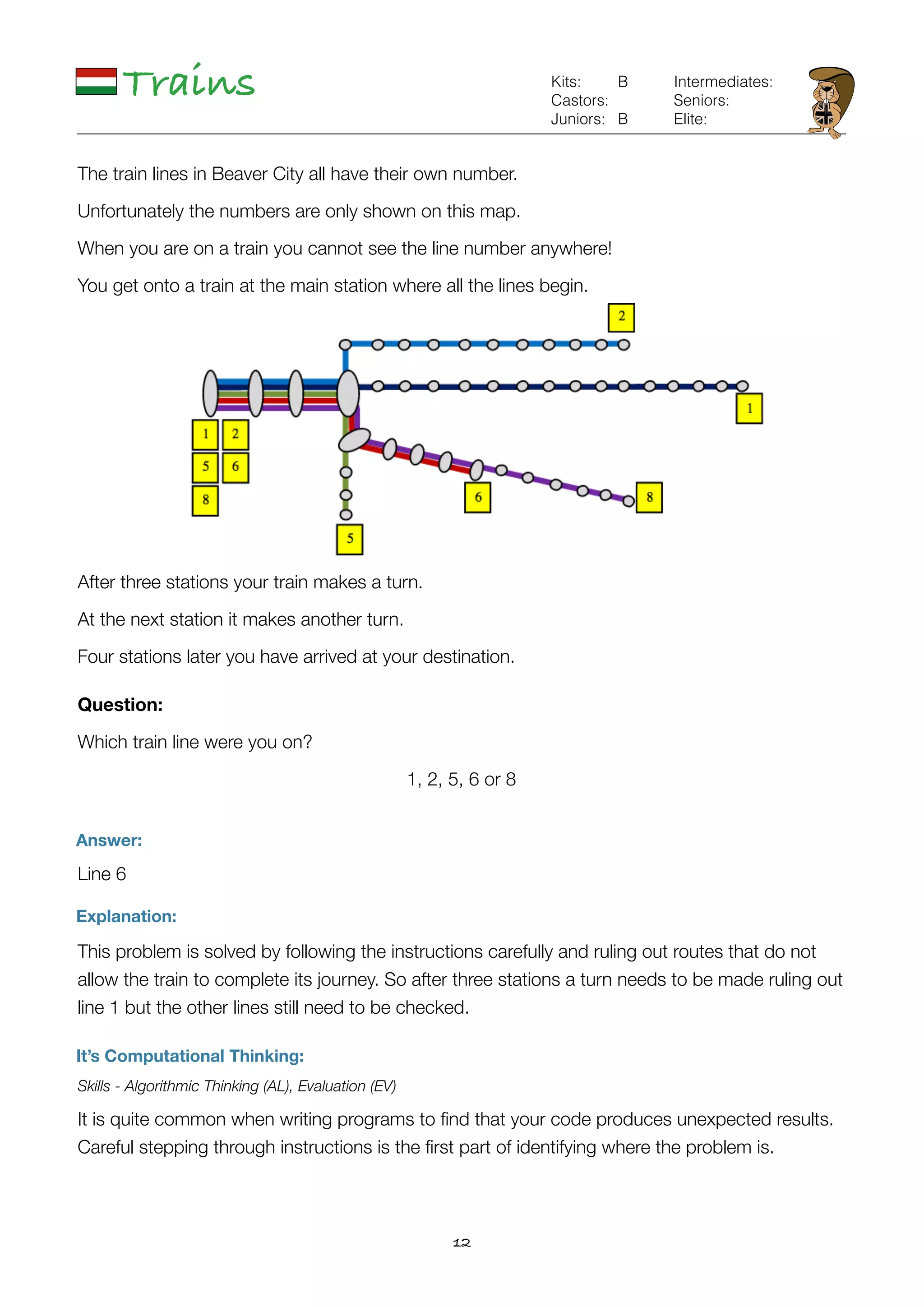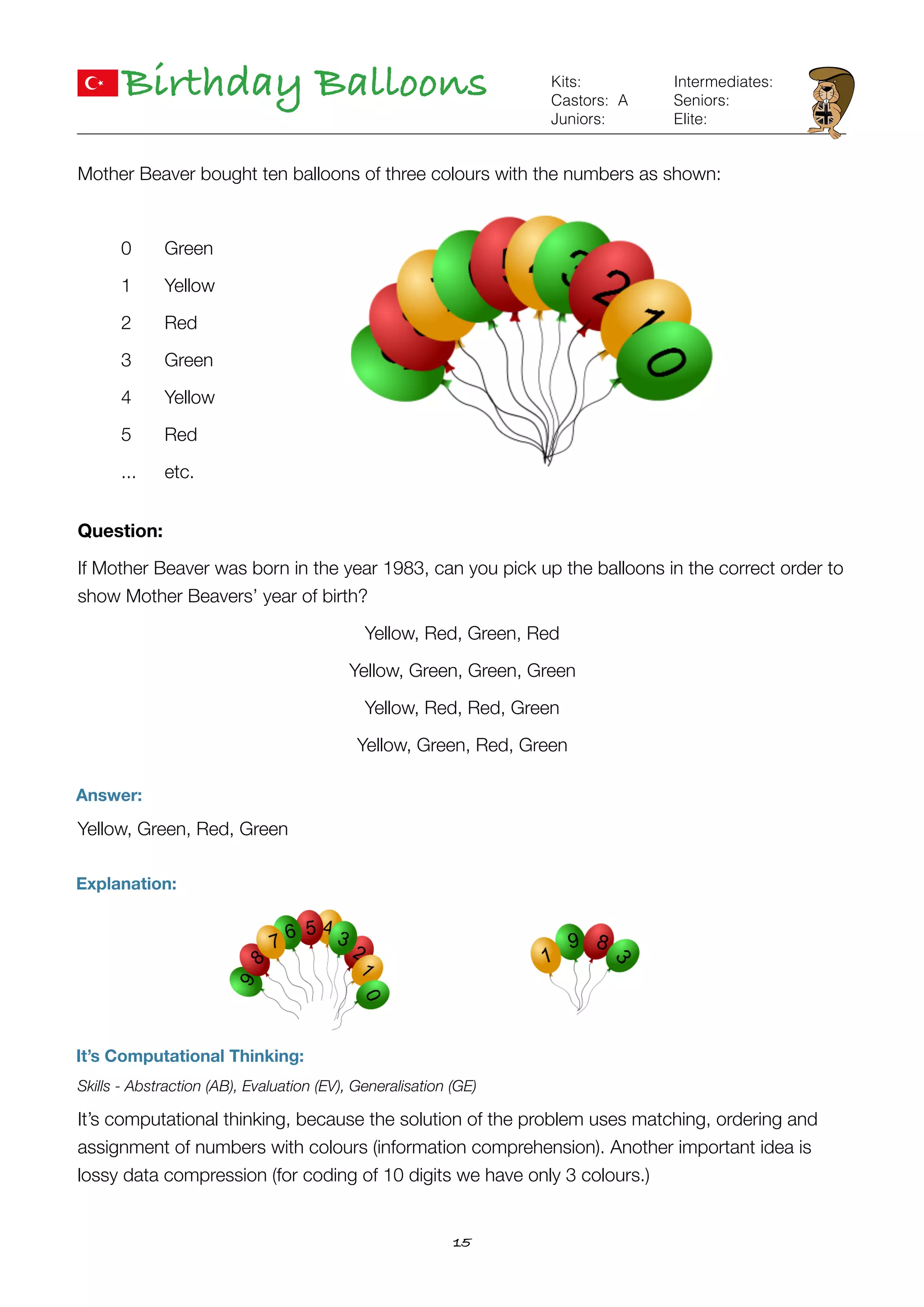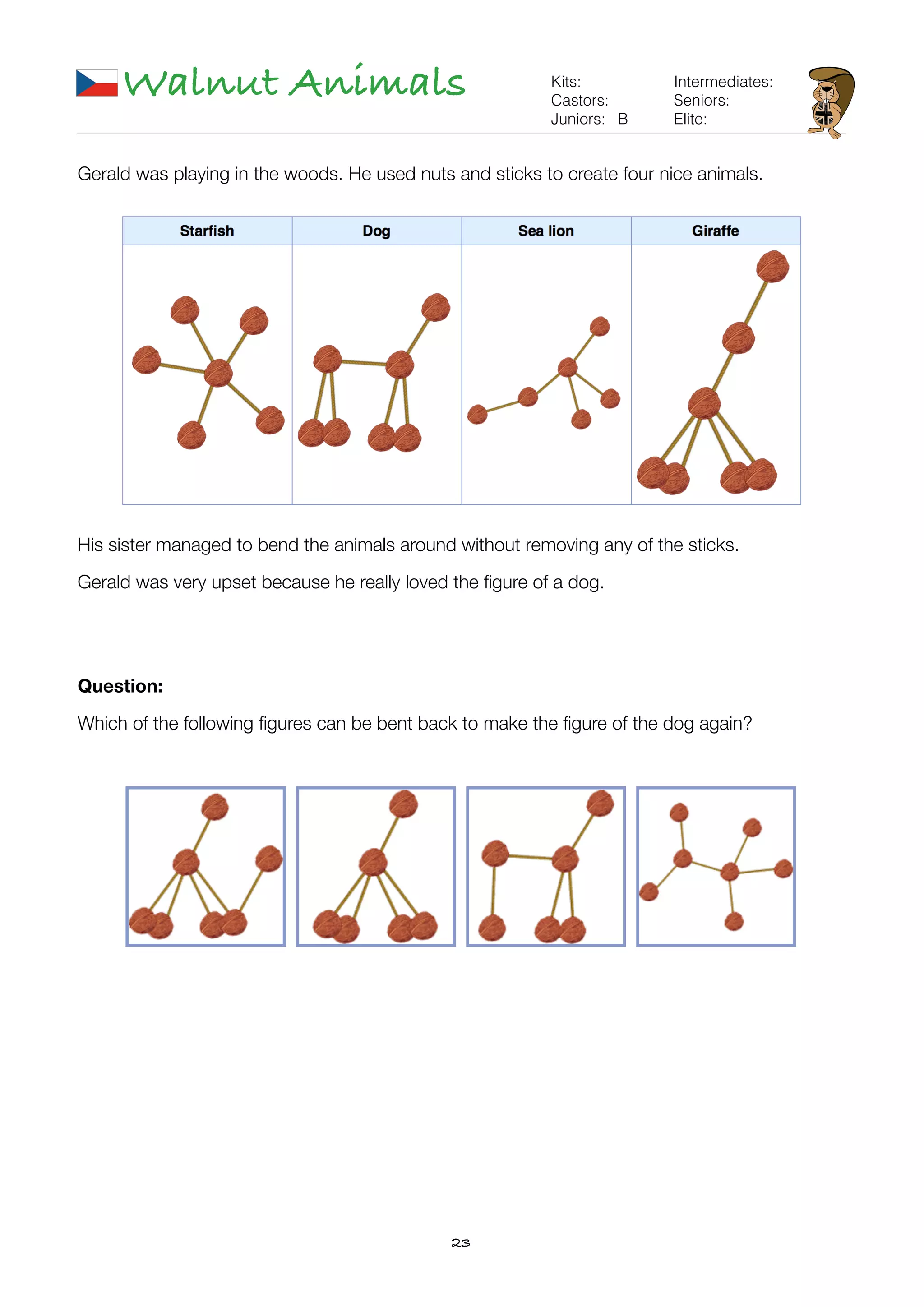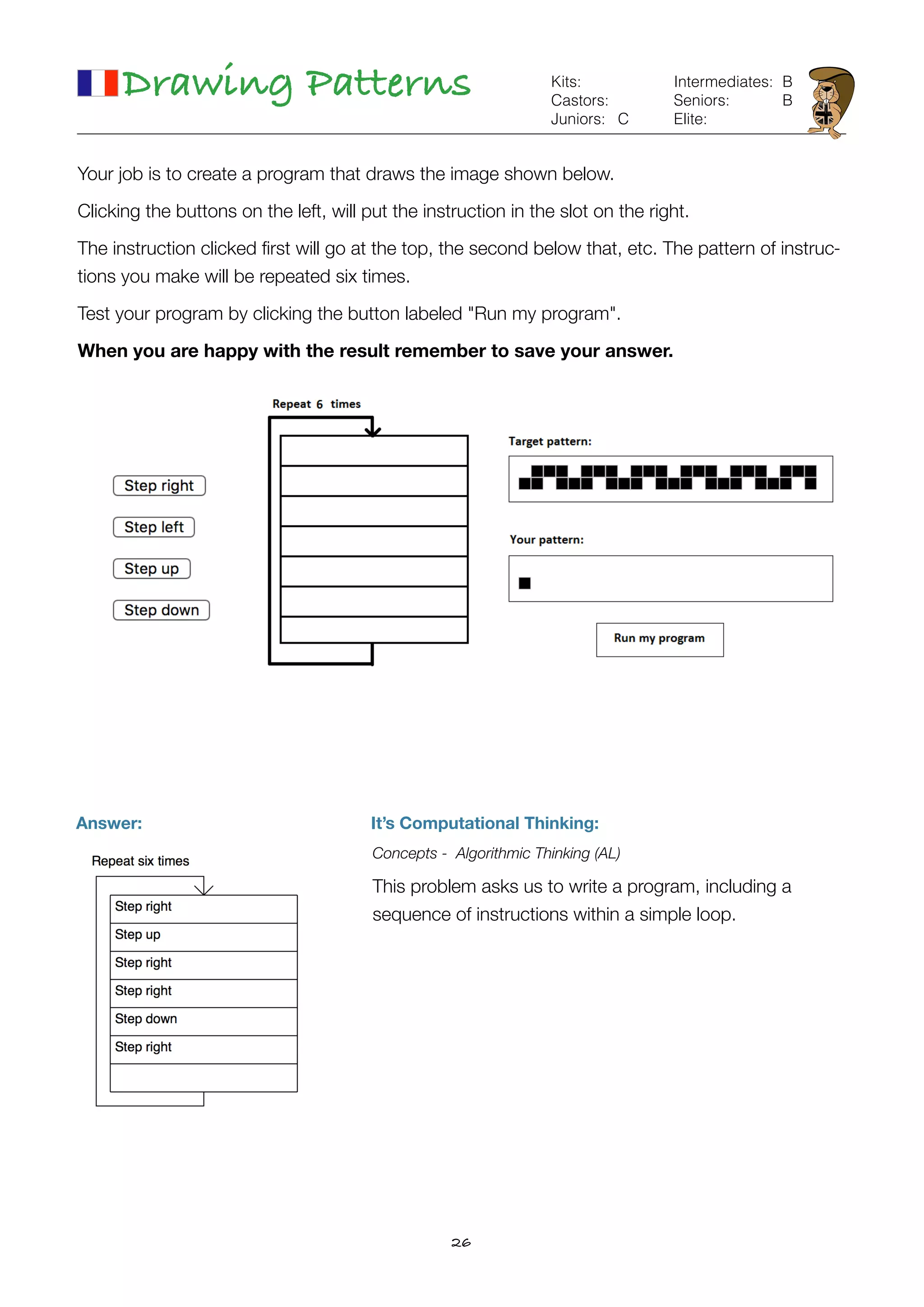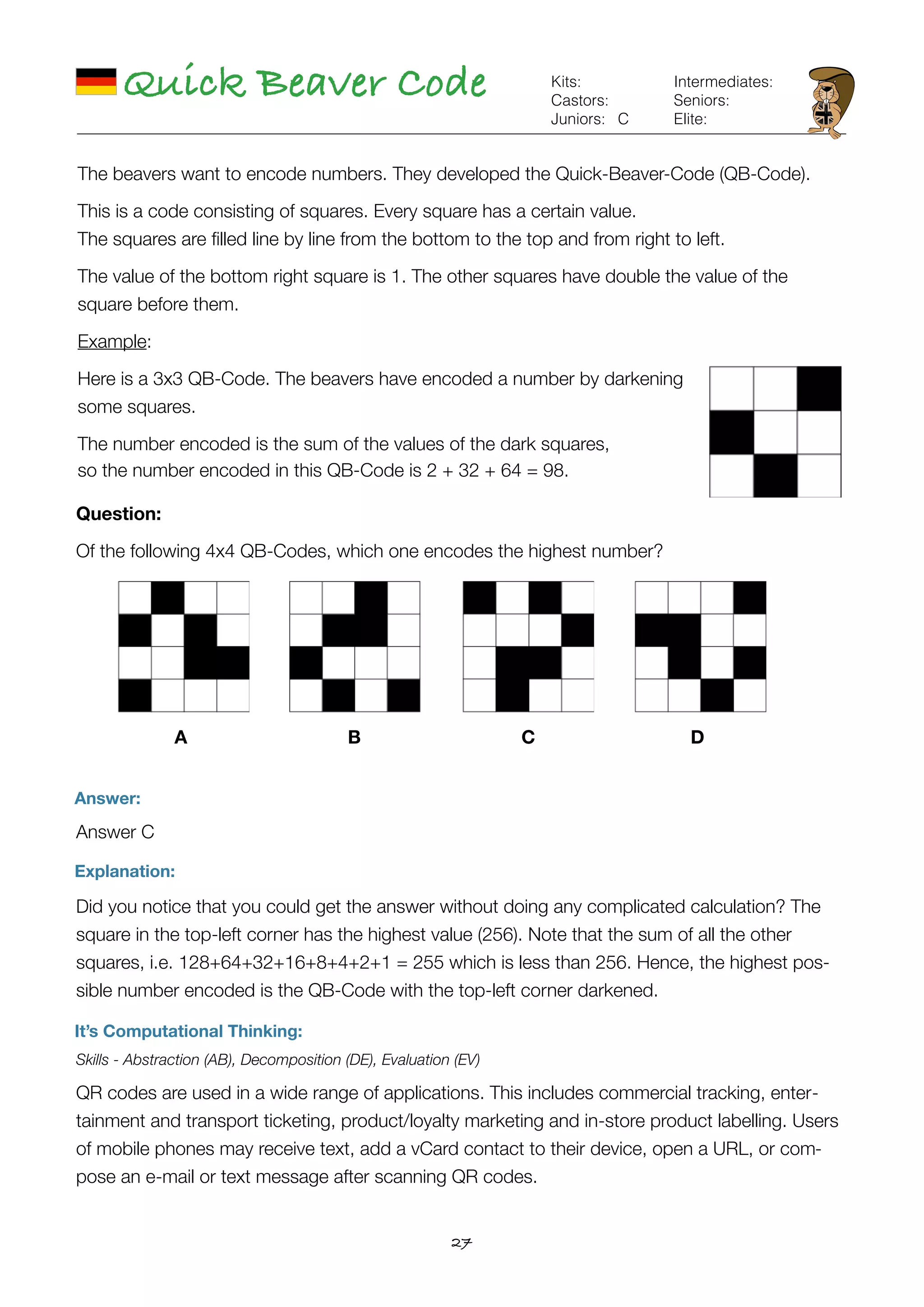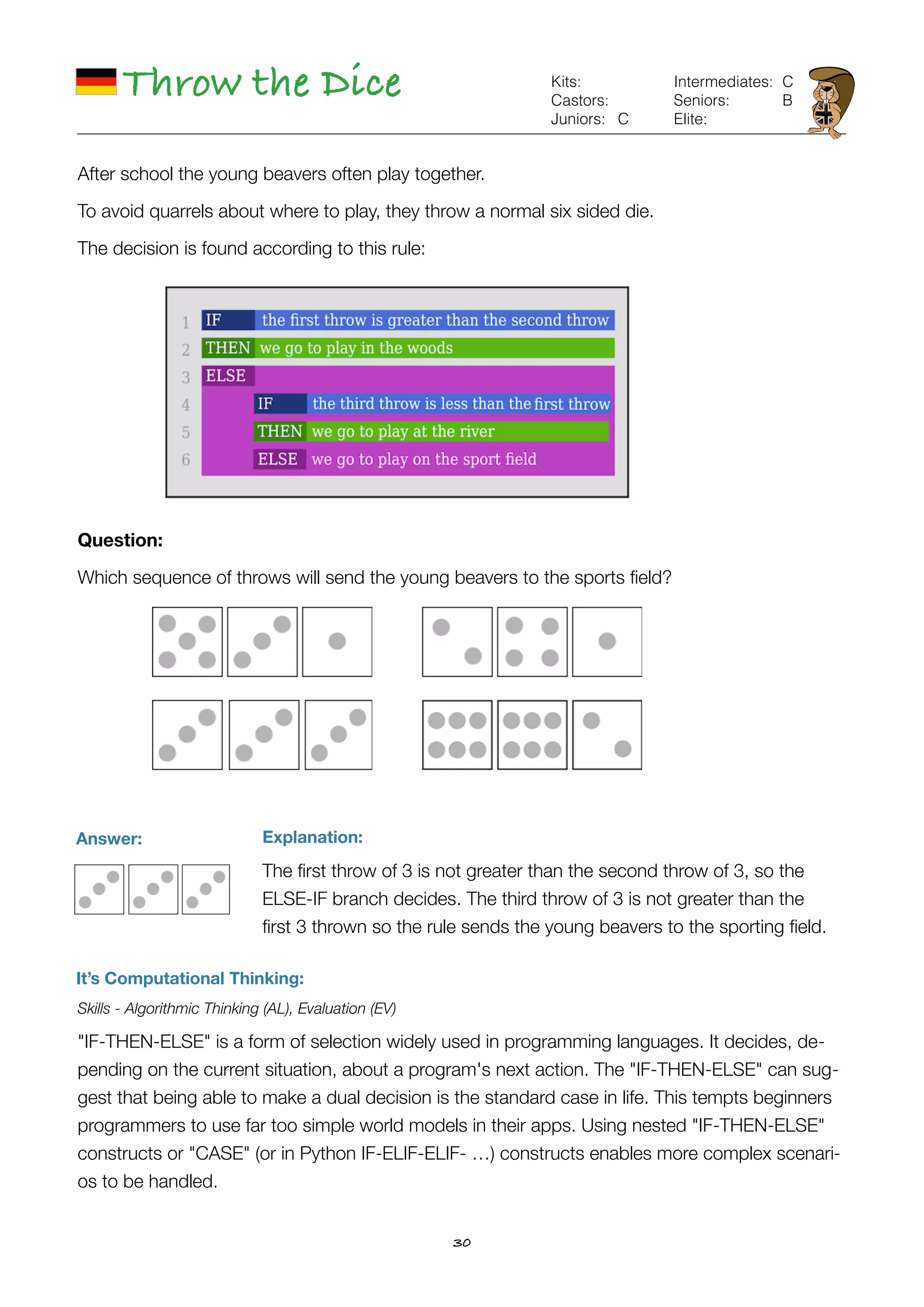Here are the steps to find the treasure:
1. Anna and Bob start at the red dot in the bottom left corner.
2. They follow the arrow on their app which points upwards.
3. This leads them to the top box containing the treasure.
The treasure is in the box at the top of the map.
It's Computational Thinking:
Skills - Algorithmic thinking (AL), Decomposition (DE)
This problem requires decomposing the task into a series of steps (an algorithm). We must understand the inputs (the map and direction arrow) and use those to determine the appropriate outputs (where to go to find the treasure). Algorithmic thinking and decomposition are important skills in computational problem
